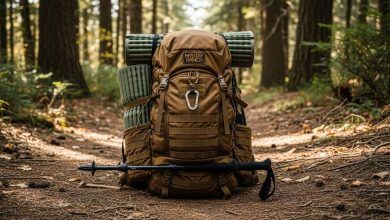
Best Bottles for Breastfed Babies: A Comprehensive Guide for Moms
Breastfeeding is a beautiful journey filled with bonding, nourishment, and care. Yet, many breastfeeding moms find themselves needing to introduce a bottle for feeding — whether to share feeding duties with a partner, return to work, or offer relief when away. Choosing the best bottles for breastfed babies can be a tricky task, as the wrong bottle might disrupt breastfeeding, cause nipple confusion, or make latching harder for your little one.
If you’re a mom navigating this path, you’ve landed in the right place. This guide will walk you through everything you need to know about selecting bottles designed specifically for breastfed babies, while giving real, practical advice to make bottle-feeding a harmonious addition to your breastfeeding journey.
Why Choosing the Right Bottle Matters for Breastfed Babies
Not all baby bottles are created equal — especially for breastfed infants. Breastfeeding and bottle-feeding use different sucking motions. When a baby breastfeeds, the tongue and jaw work in a particular way to stimulate milk flow and ensure proper latch. If the bottle nipple doesn’t mimic the breast’s shape or flow closely, your baby might:
- Develop nipple confusion
- Struggle with latching at the breast
- Experience frustration or feeding refusal
- Feed overly fast or too slow, causing gas or fussiness
For these reasons, bottles marketed as “breastfed baby bottles” offer specific features to ease the transition between breast and bottle, allowing your baby to feed naturally without disruption.
Key Features of the Best Bottles for Breastfed Babies
When shopping for baby bottles that best complement breastfeeding, look for these crucial features:
-
Breast-Like Nipple Shape and Material
Choose bottles with nipples that mimic the breast’s natural shape — wide, soft, and flexible. Silicone or a similar soft material that can move and stretch similar to a breast will feel more familiar to your baby.
-
Slow Flow or Adjustable Flow Nipples
To avoid fast milk flow that can cause choking or discomfort, start with slow-flow nipples. Adjustable flow options are great as your baby grows and their feeding pace changes.
-
Anti-Colic Venting System
Gas, colic, and fussiness can wreak havoc on a baby’s digestive system. Bottles with venting or anti-colic valves allow air to flow into the bottle instead of your baby’s tummy, reducing gas and discomfort.
-
Easy to Clean and Assemble
Look for bottles with fewer parts that are easy to clean and sterilize. Breastfeeding moms often juggle multiple responsibilities, so simplicity is important.
-
BPA-Free and Safe Materials
Always opt for BPA-free bottles made from safe, durable materials like medical-grade silicone or polypropylene to keep your baby healthy.

Top Recommended Bottles for Breastfed Babies in 2025
Here’s a rundown of some of the best baby bottles for breastfed babies based on parent reviews, pediatrician recommendations, and tested design features.
-
Comotomo Natural Feel Baby Bottle
Comotomo bottles are widely acclaimed for their ultra-soft, wide silicone nipples that closely resemble the shape and feel of a mother’s breast. The bottle’s squeezable silicone body allows for easy milk flow control, making it ideal for breastfed babies transitioning to bottle-feeding.
- Soft, breast-like nipple
- Anti-colic vents reduce gas
- Easy to clean, fully disassembles
- BPA and PVC free
-
Dr. Brown’s Natural Flow Bottle
Dr. Brown’s bottles feature a patented internal vent system that eliminates air bubbles and reduces feeding discomfort. The nipple closely mimics breastfeeding with slow, steady milk flow, reducing nipple confusion risk.
- Internal venting for anti-colic benefits
- Slow flow nipple options
- Available in various sizes
- BPA-free and dishwasher safe
-
MAM Easy Start Anti-Colic Bottle
MAM’s wide, soft nipple is designed to feel familiar to breastfed babies, with a unique vented base that prevents air swallowing. The self-sterilizing feature makes it perfect for on-the-go moms.
- Soft silicone nipple
- Anti-colic vent technology
- Sterilizes in microwave in 3 minutes
- BPA free
-
Philips Avent Natural Baby Bottle
Philips Avent’s Natural range is designed with a wide breast-shaped nipple that promotes natural latch and feeding rhythms. Its anti-colic valve reduces discomfort and fussiness during feeding.
- Breast-like nipple shape
- Anti-colic valve on nipple
- Easy to clean wide neck design
- BPA-free
-
Tommee Tippee Closer to Nature Bottle
Tommee Tippee is popular among breastfeeding moms due to its breast-like nipple and wide neck bottle, making cleaning easier. Designed to replicate the natural flex, stretch, and movement of mom’s breast, it helps babies switch between breast and bottle effortlessly.
- Breast-shaped nipple
- Slow flow to encourage sucking technique
- Anti-colic valve
- BPA free
Tips for Transitioning from Breast to Bottle
Even with the best bottles for breastfed babies, the transition can take time. Here are some expert-backed tips to help make the switch smoothly:
- Introduce bottle feeding gradually. Start with one bottle feeding per day or every few days until your baby gets used to the bottle’s feel.
- Have someone else feed the baby. Babies often refuse bottles from breastfeeding moms due to scent; a partner or caregiver can help ease the transition.
- Mimic breastfeeding positions. Hold your baby in a similar position as nursing to provide familiarity and comfort.
- Use breast milk in the bottle first. This helps your baby recognize taste and reduces resistance.
- Stay calm and patient. Forcing a bottle can increase frustration. Try again later if your baby resists.
- Ensure a proper latch on the bottle nipple. Observe if your baby sucks in a similar style and rhythm as breastfeeding, adjusting nipple flow if needed.
FAQs About Bottles for Breastfed Babies
Q1: Can bottle-feeding cause nipple confusion in breastfed babies?
A: It can if the bottle nipple’s shape and flow differ significantly from the breast. Using breast-like nipples with slow flow can minimize nipple confusion.
Q2: When should I introduce a bottle to a breastfed baby?
A: Many experts recommend waiting until breastfeeding is well established, usually around 4-6 weeks, before introducing a bottle.
Q3: Are slow flow nipples necessary for breastfed babies?
A: Yes. Slow flow nipples better simulate the natural breastfeeding flow and help your baby avoid choking or gulping air.
Q4: Do anti-colic bottles really help reduce gas?
A: Yes, bottles with anti-colic venting systems reduce swallowed air, which decreases the chances of gas, spitting up, and fussiness.
Q5: How important is the bottle material?
A: Very important. Choose BPA-free, medical-grade silicone or plastic bottles to ensure your baby’s safety and avoid harmful chemicals.
Final Thoughts: Choosing the Best Bottle for Your Breastfed Baby
Finding the perfect bottle for your breastfed baby is not just about convenience; it’s a key component in supporting your breastfeeding goals, minimizing frustration, and protecting the natural feeding rhythm. Bottles like Comotomo, Dr. Brown’s, and MAM offer designs tailored for breastfed infants, helping maintain a healthy latch and comfortable feedings.
Remember to focus on your baby’s cues and preferences, start slow, and keep the feeding experience positive and reassuring. With the right bottle in hand, your breastfeeding journey can continue smoothly, with the flexibility to share feeding moments with family and caregivers.
Related Topics:
How to Ensure Baby Blankets Are Free From Harmful Dyes
What to Write in a Book Gift Message for an Unborn Baby at a Baby Shower




